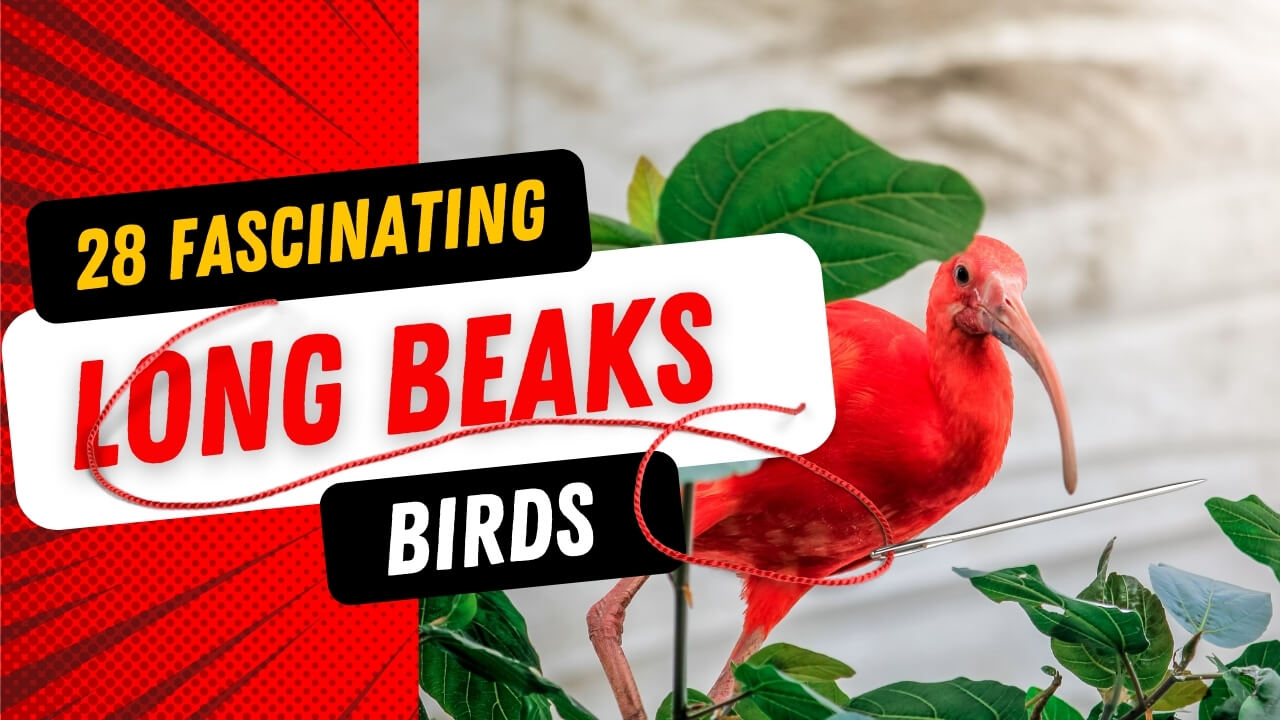Birds with long beaks are a fascinating group of birds. They have a wide variety of physical features that make them stand out from other birds. From toucans to kiwi birds, these species are some of the most unique on earth.
What are these long beaks for? Birds use their long beaks for many purposes, such as feeding, grooming, preening, and all types of other activities.
Let’s explore what makes these species so unique in the list below.
Long-Billed Curlew

Average beak length: 8 inches (20 cm) long
The long-billed curlew is a large wader with a very long beak. It ranges from dark brown to golden-brown with white undersides and a distinctive eye stripe from the corner of its eyes to its chin.
This long slender beak aids the birds as they find food as well as protects the birds from enemies as they search for prey on land and in water.

The birds nest on the ground in small temporary colonies and feed primarily on insects during the summer months, making short flights of no more than 100 meters from their nests. In winter, they will travel as far as 1000 kilometers away from their breeding grounds using their long bills, which can be up to 25 cm, to probe into mud or sand for invertebrates like worms and mollusks.
Toco Toucan
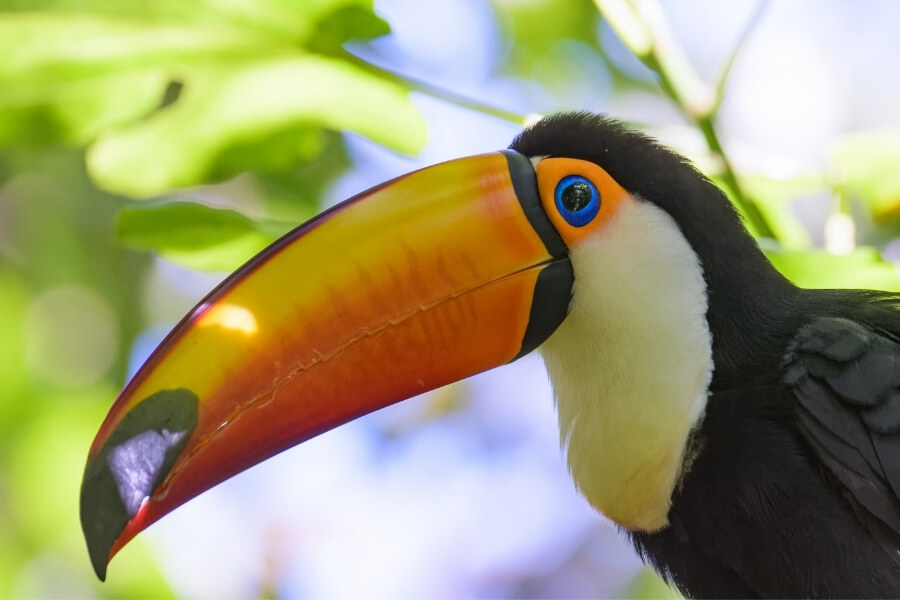
Average beak length: 7 inches (17 cm) long
The Toco toucan is one of the world’s most giant toucans living in Central America. It has a large white bill with two black bands running across it. The upper half of the band is thick while the lower half is thin, almost like a divided highway!
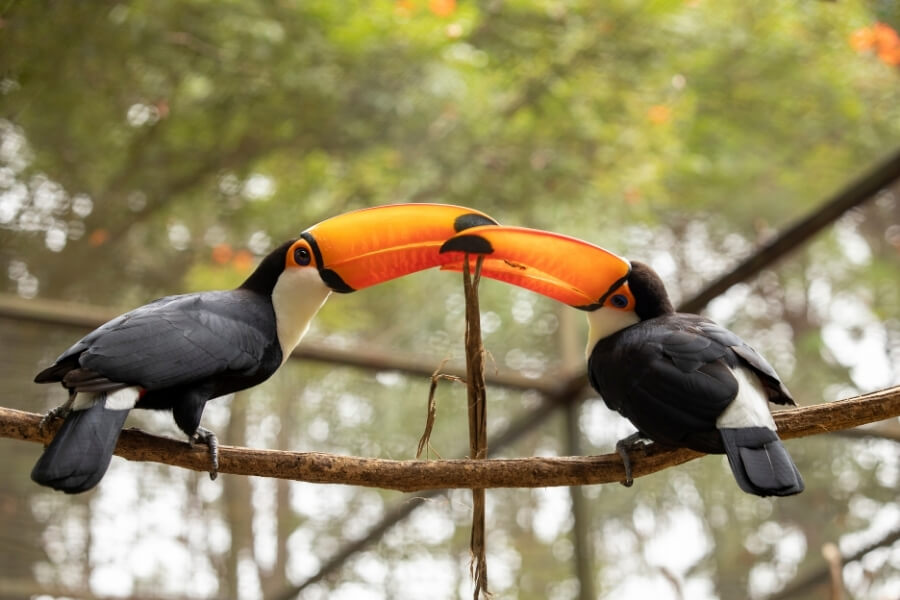
On top of these birds being big-beaked, they are also very colorful birds with green feathers covering their heads down to their backs and white feathers on the undersides of their bodies.
Goliath Heron
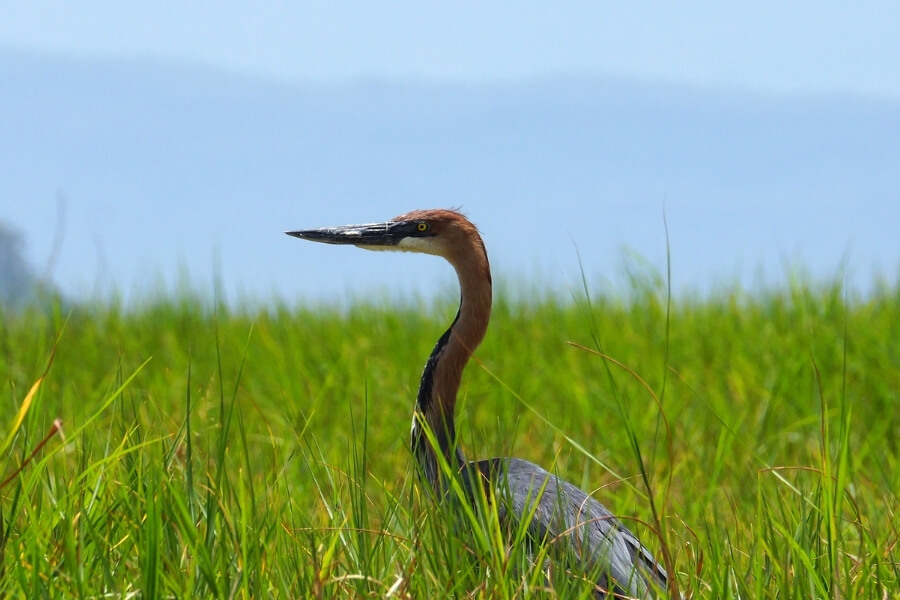
Average beak length: 8.9 inches (23cm) long
The Goliath heron or great blue heron is the largest of the birds with long beaks and belongs to the family Ardeidae. They are found in parts of Africa, Southern Europe, and South America.

It is also called the giant heron, large egret, or common egret. They can grow to a height of 1.8m and weigh up to 3kg with a wingspan measuring 2 meters and beak measuring 20 cm in length. They feed mostly on fish and frogs while scavenging on small birds’ leftovers from other birds such as pelicans.
Bald Eagle

Average beak length: 1.6-2.4 inches (4-6 cm) long
This big bird belongs to the family Accipitridae. It is one of North America’s largest birds living in coastal regions, forests, deserts, and almost any other habitat that provides them with access to dead animals on which they can feed.
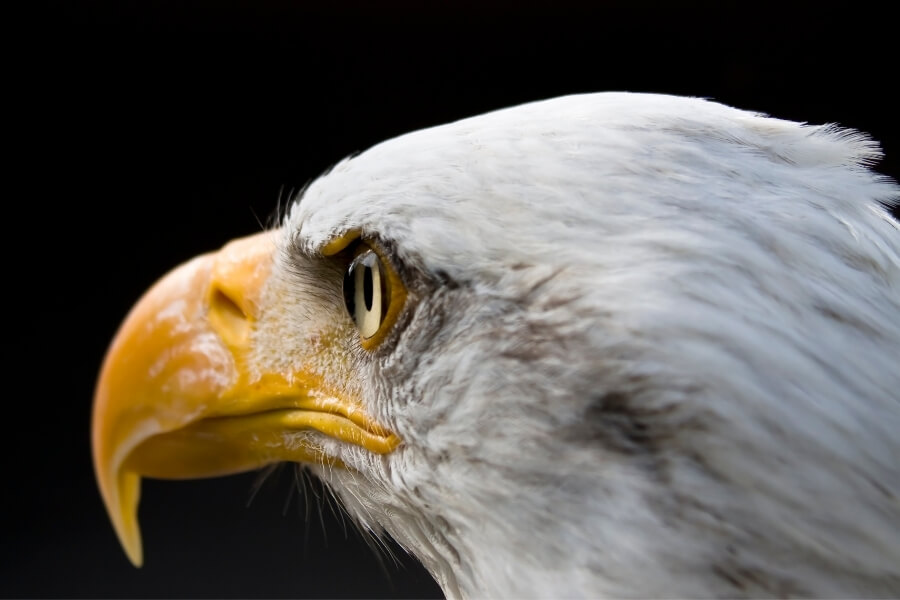
They have long, powerful legs that help them run down their prey, as well as strong curved talons for holding onto it while eating it. Some birds even hunt using ‘karate chop’ style attacks where they grab the animal or bird by its then use their feet to hold it down while they rip it apart with their beaks!
Pelican

Average beak length: 8-12 inches (20-30 cm) long
This large bird is a water bird belonging to the family Pelecanidae. Pelicans are primarily white but have some black feathers on their wings, tail, and breast. They also have long bills with huge throat pouches, which allow them to catch fish without letting any of the water out so the birds can store what they’ve caught for later!
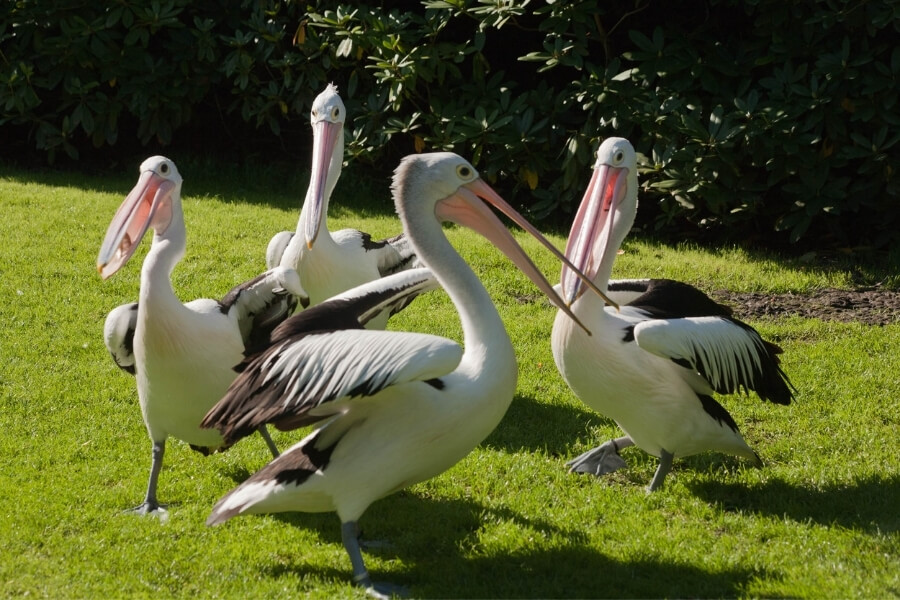
These birds have long, thin legs that help them wade around deep waters looking for food and very flexible necks that they use to scoop up birds from shallow waters near coasts where other birds can’t go because of not being able to take off again once they land.
Frigate birds
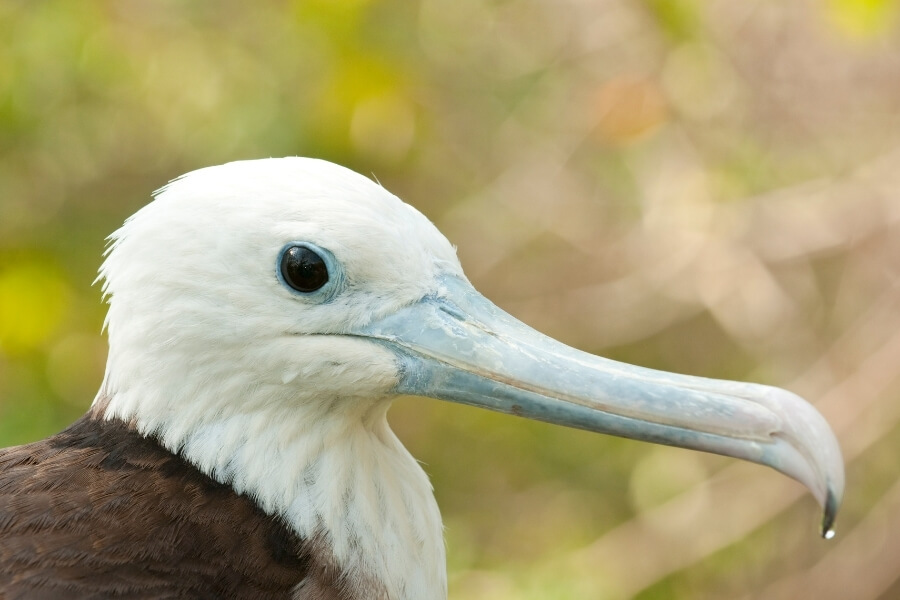
Average beak length: 5-7inches ( 12.7-18.8cm) long
This bird of prey is a seabird living in tropical oceans around the world. They have long, narrow wings that help them fly for days on end without stopping, which makes these birds excellent long-distance flyers! They can even sleep while flying, so they only need to land every few days to rest their wings before taking off again.

Frigate birds steal food from other birds by chasing them until they drop what they are carrying and then picking up the scraps after the hungry birds have given up! Sometimes, this food-stealing technique works against the frigate birds, as larger birds like pelicans will trap them in their huge beaks and eat them as snacks!!
Hummingbird

Average beak length(Male): 6-7inches (15-18 cm) long
Average beak length(Female): 6.7-8inches (17-20 cm) long
The hummingbird is a small bird with an extremely fast heartbeat of up to 1230 beats per minute which means they are one of the hardest working birds on the planet! Their little wings can move so quickly that these birds make a humming noise when in flight.
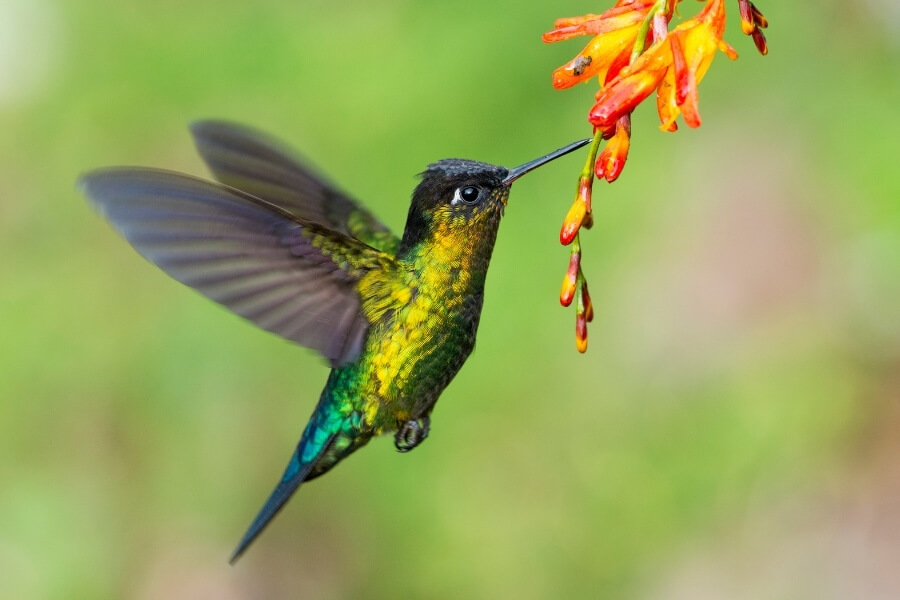
Every day, hummers will visit more than 1 million flowers to collect nectar and insects for food. They can even fly backward, sideways, and hover as bees do! So what makes them different from other birds with long beaks? Well, while most birds have one tongue made of bone or cartilage, hummingbirds have two tongues that are forked into two tubes that can move independently of each other!
New Zealand Kiwi Bird
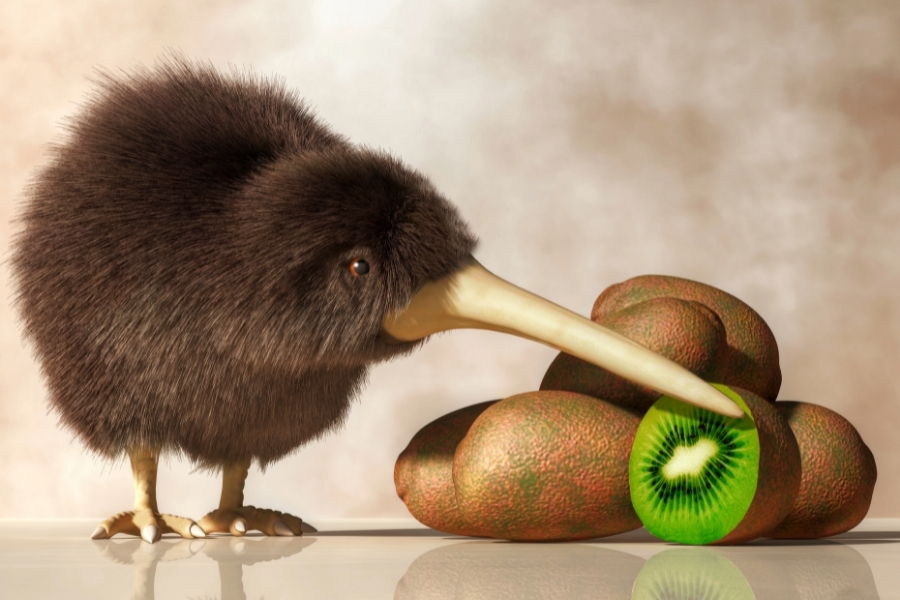
Average beak length: 6 inches (15 cm) long
The kiwi bird gets its name from the Maori word “kiwi,” which means land-dwelling New Zealander (the kiwi bird also goes by the English name kiwi). Kiwi birds are short, round birds with long beaks.
The kiwi is the national bird of New Zealand. They are birds belonging to the Apterygidae family whose name was given by early settlers from Europe who thought these birds were related to birds they called ‘kiwis’ in their home country, which is now known as Australia.

Kiwis have long beaks that help them sniff out grubs and worms deep inside the soil, as well as long whiskers that act like antennae so birds can touch and feel things with them without putting their beak on them.
One of the most exciting features about kiwis is their sense of smell. Because their eyesight is so poor, kiwis rely on their excellent sense of smell to find food at night! The kiwi has an average wingspan of 60 cm and weighs about 1 kg.
The Kingfisher
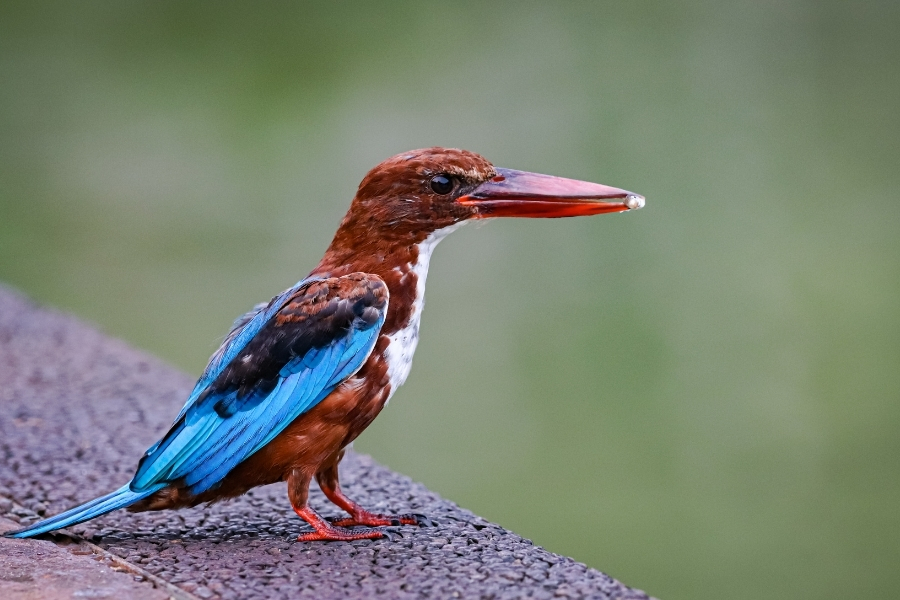
Average beak length: 2.8 inches (7 cm) long
The Kingfisher is a bird that lives near lakes, ponds, and rivers. They have long beaks that help them hunt for food, such as tiny fish and insects, as well as sharp claws on their talons to catch slippery creatures!
These beautiful birds are primarily blue with bright yellow markings on their tail and wings, which help them blend in with the sky while diving for prey. Its long beak can sometimes measure almost three inches long. When feeding, this bird dives into the water feet first using its wings for extra momentum and speed, then feeds on fish or crayfish hiding under the surface.
Kingfishers are birds of prey (meaning they eat meat) and their diets consist mainly of crustaceans, mollusks, frogs, and small birds.
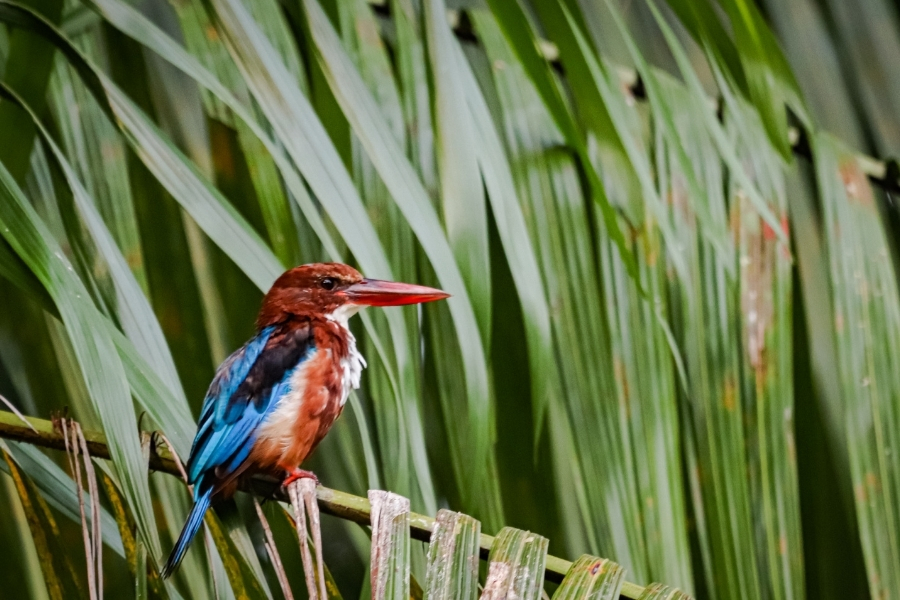
Kingfishers also use their long beaks to dig out nests in banks along the water so their young can live safely away from predators like birds of prey and even larger aquatic animals like crocodiles. These birds of prey will guard the nest until the chicks hatch before taking off again to find more food!
Great Frigate bird

Average beak length: 3.5-5.1inches (9-13cm) long
These birds belong to the family Fregatidae. Frigate birds are birds of prey who can fly very well but spend most of their time floating on the ocean currents searching for fish.
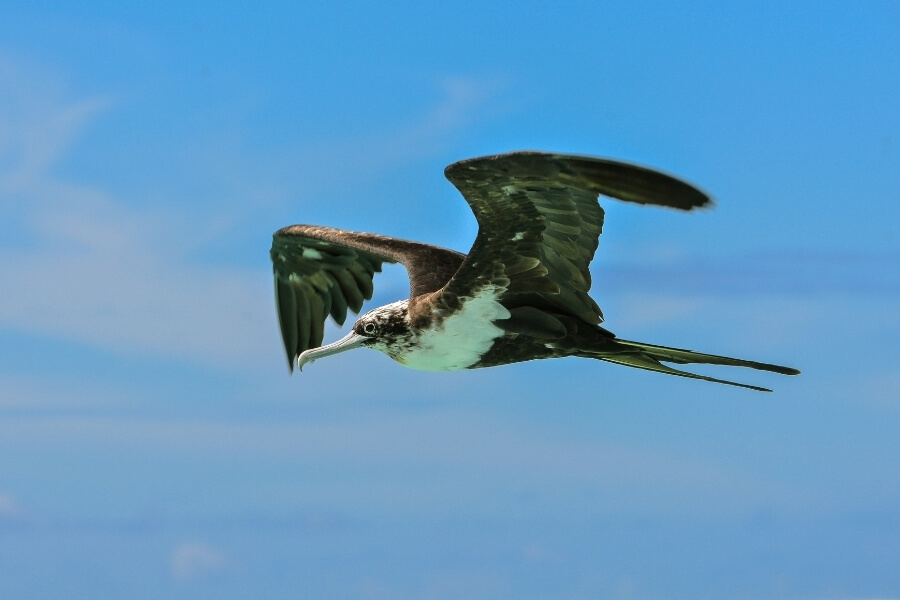
They have long wings that help them glide effortlessly through the air to find food for themselves and their chicks. The birds also have a long slender beak with large throat pouches, which allow them to catch fish in deeper waters where other birds can’t go!
The Woodpecker

Average beak length: 1.9 inches (5 cm) long
Woodpeckers are birds who use their long beaks to help them find food, dig into trees for insects, or make nests! Their very long tongues can measure almost twice as long as their entire head, making them some of the birds with the longest tongues in the world. They also have barbs at the end of their tongues that act like little hooks so birds can hold onto insects first before pulling them back towards their throat, where they will eat them!

Long beaks are not just used for hunting since woodpeckers also use these birds to climb tree trunks. They have three toes pointing forwards and one toe pointing backward, which gives birds a better grip while scaling large pieces of bark!
This helps woodpeckers climb up and down with ease. Woodpeckers also have strong tail feathers, which help birds steer as they climb too!
Keel-Billed Toucan
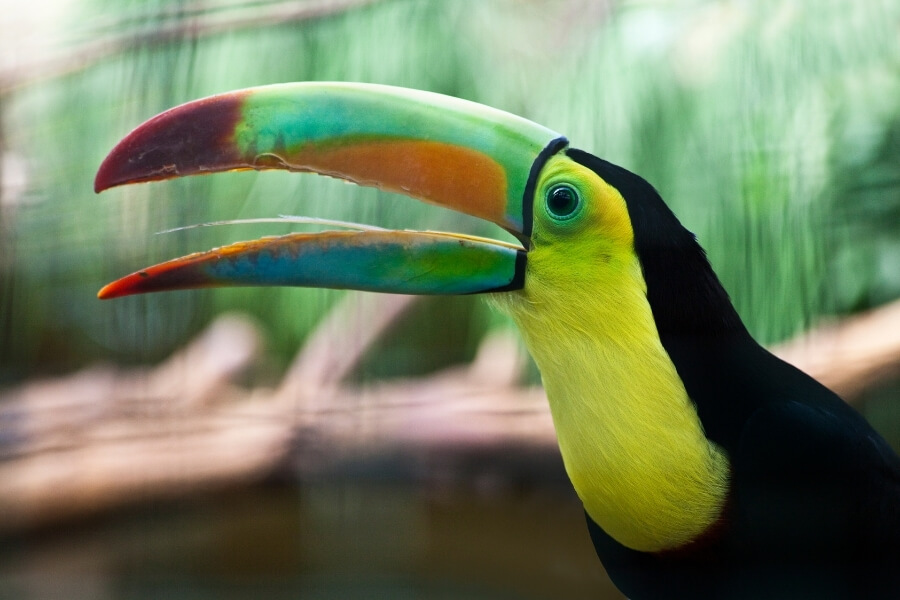
Average beak length: 4-6 inches (13-16 cm) long
Keel-Billed Toucan are birds with crazy-looking beaks that can grow almost as long as their bodies! These birds have a great sense of smell which helps them sniff out food from deep inside the rainforest among all the vegetation and branches. Keel-Billed toucans mostly eat fruit, nuts, and insects, and sometimes they will even eat reptiles like lizards and birds’ eggs, making them omnivores!
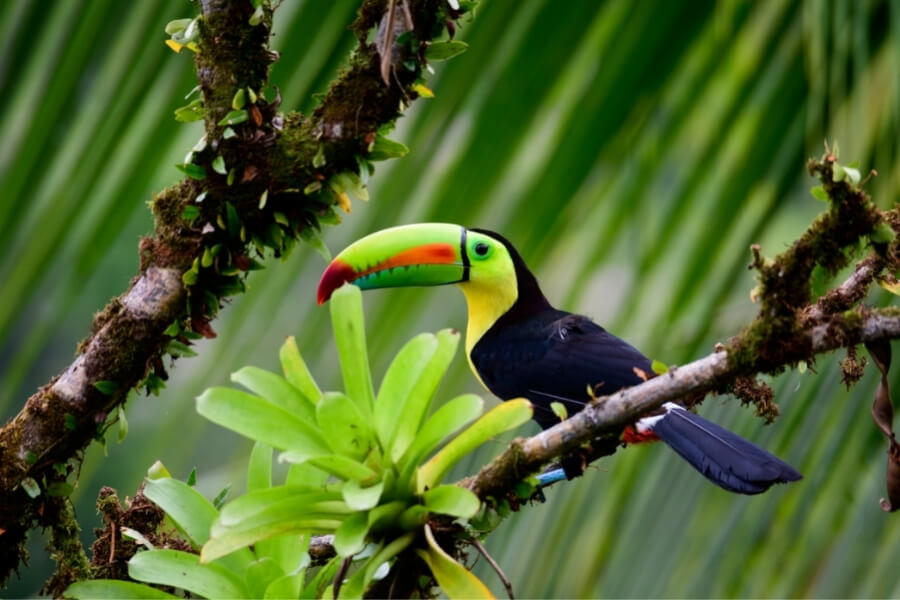
Keel-Billed Toucans can fly, but they usually walk around searching for food, making them birds with long beaks. They use their powerful claws and a very special mechanism in their feet that allows birds to grasp onto branches easier without rotating their ankles! This helps Keel-Billed toucans move from branch to branch or even hang upside down from the canopy while birds search for food.
The Wood ibis
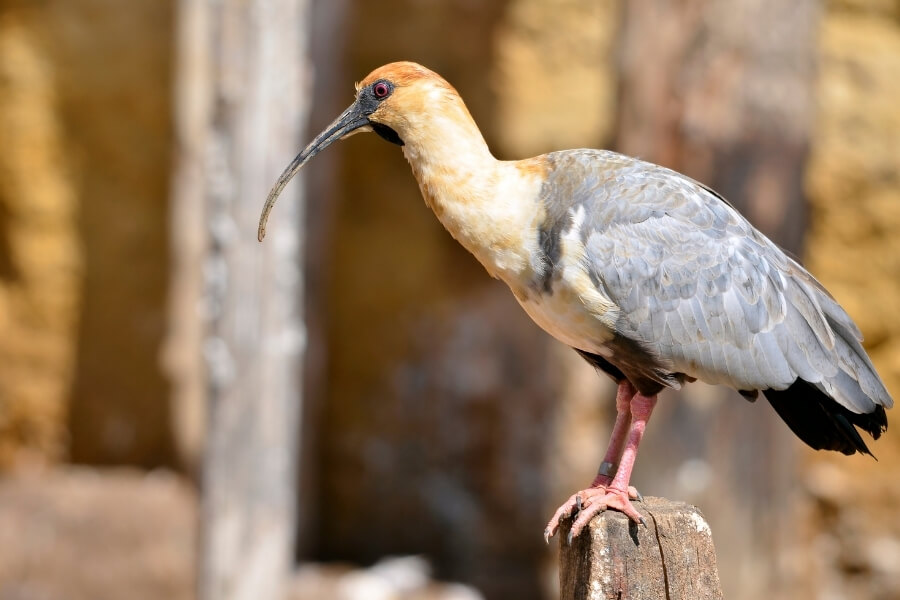
Average beak length: 7.5 inches (19 cm) long
The Wood ibis is a long-beaked bird that has an overall length of around 70cm. It also has black feathers and a small crest on its head.
Another name for the wood ibis is the Paddy Bird. This bird gets its name from a local Irish saying which means ‘Clumsy fellow.’
When breeding season comes around, these birds engage in elaborate courtship displays, with both birds circling each other, bowing and raising their crests, extending their necks, and calling out loudly before landing close together to preen each other’s head and neck areas.
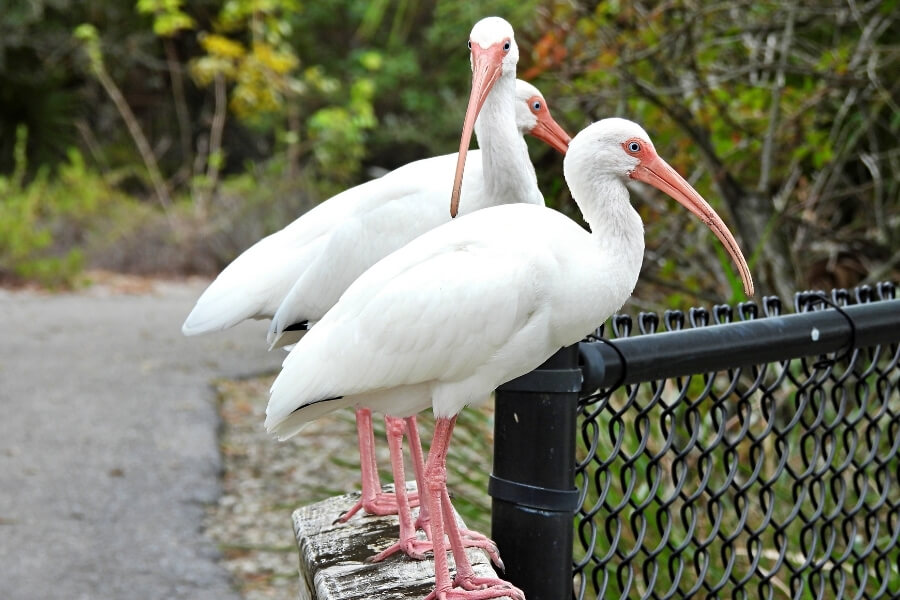
Wood Ibises are birds that live mostly near wetlands or along rivers which means they have access to large amounts of fish! They use their long powerful beaks to tear apart large fish that birds can eat. These birds also have eyes that face forward, which helps them look for prey while birds are moving in the water.
Long beaks are birds with long thin beaks perfect for catching fish or lapping up freshwater! They use their long beaks to scoop up small prey like insects, snails, and frogs too.
The Jabiru
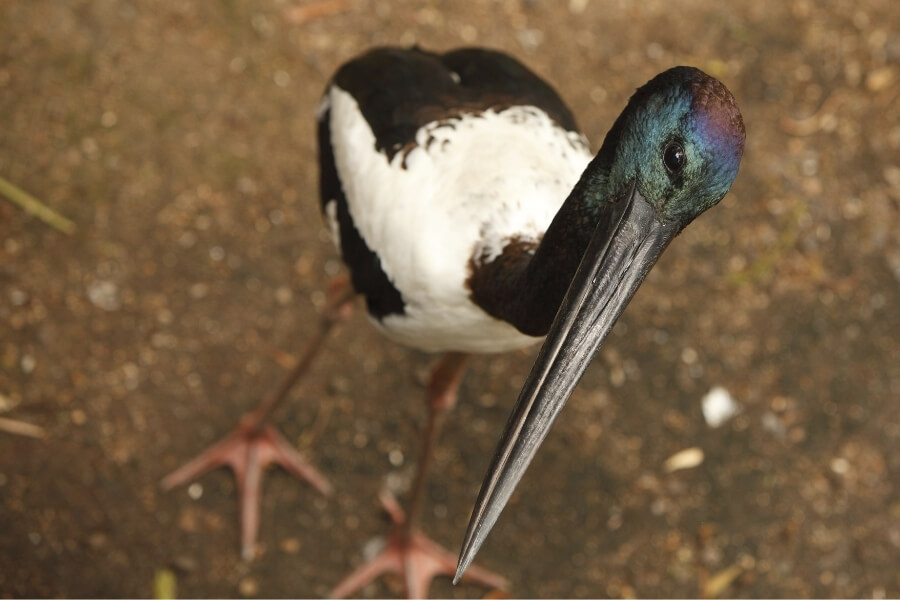
Average beak length: 5-7 inches (12.7-17.8 cm) long
The jabiru is a long-beaked bird with an overall length of around 3 feet. It has the largest beak of any storks species! These birds get their name from the Native American word for ‘swamp’ because birds are commonly found in swamps across South America and Mexico.
During the breeding season, jabirus live near shallow waters since these birds use their long beaks to catch fish like catfish! They’ll also eat tadpoles, insects, and amphibians too which makes them omnivores who search for food in both freshwaters and on land during certain times of the year.

Jabirus cannot fly, but they will use their large wings to help birds take off, and birds can also use birds to jump short distances too, so birds aren’t completely ground-bound.
Roseate Spoonbill
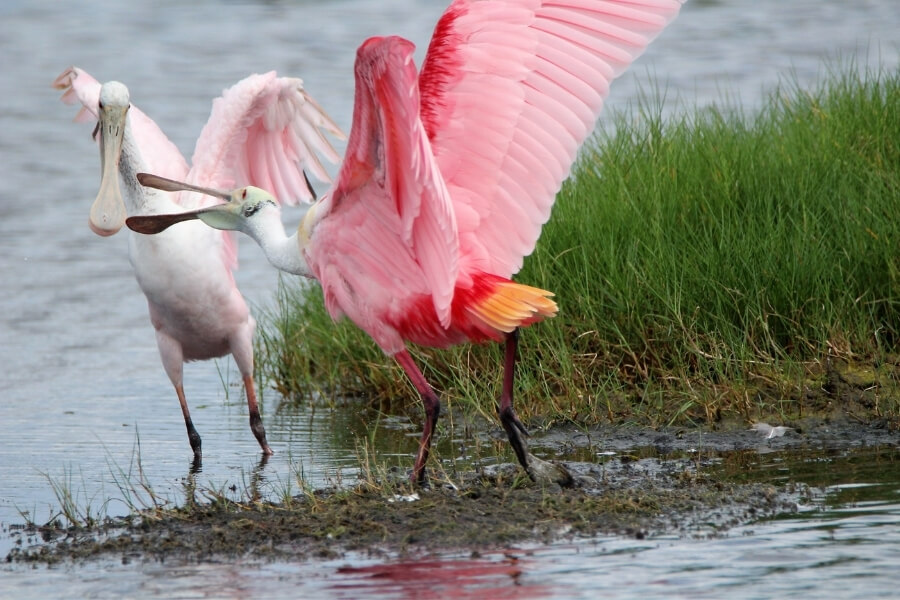
Average beak length: 4-6 inches (10-15 cm) long
The roseate spoonbill is an unmistakable bird with its pink bodies, long curved beaks, and black wingtips. These birds are found in several locations across the Southern United States, including Florida!
Roseate spoonbills mostly eat small fish, often menhaden or mullet species, but birds eat crustaceans like shrimp and insects. On rare occasions, birds have been seen scavenging for food on land after other animals make off with it first!
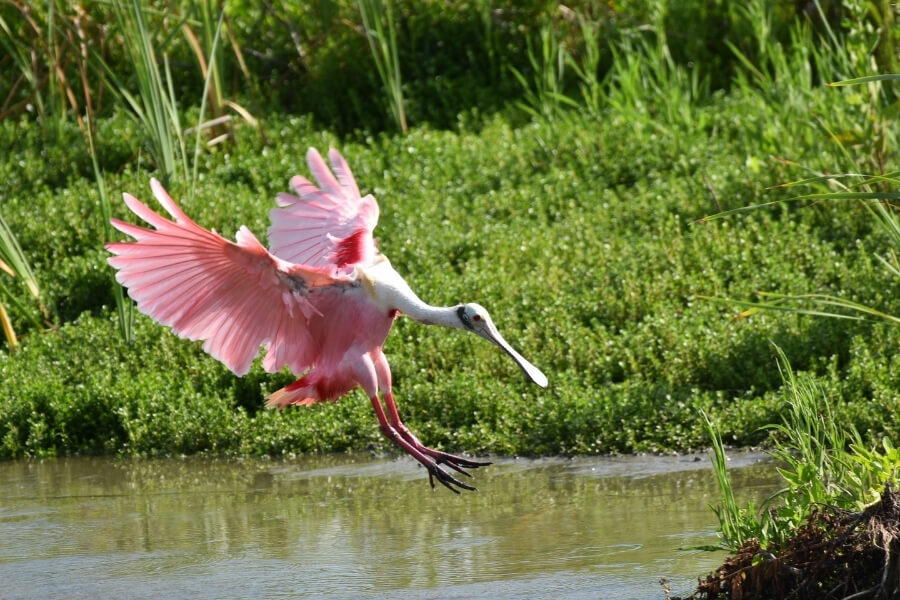
Roseate spoonbills feed by wading through shallow water or standing still on lily pads while using their long beaks to reach down into the water to catch prey birds can swallow whole. Beak size varies depending on location because birds have more room to grow beaks in warmer areas.
The Shoebill stork
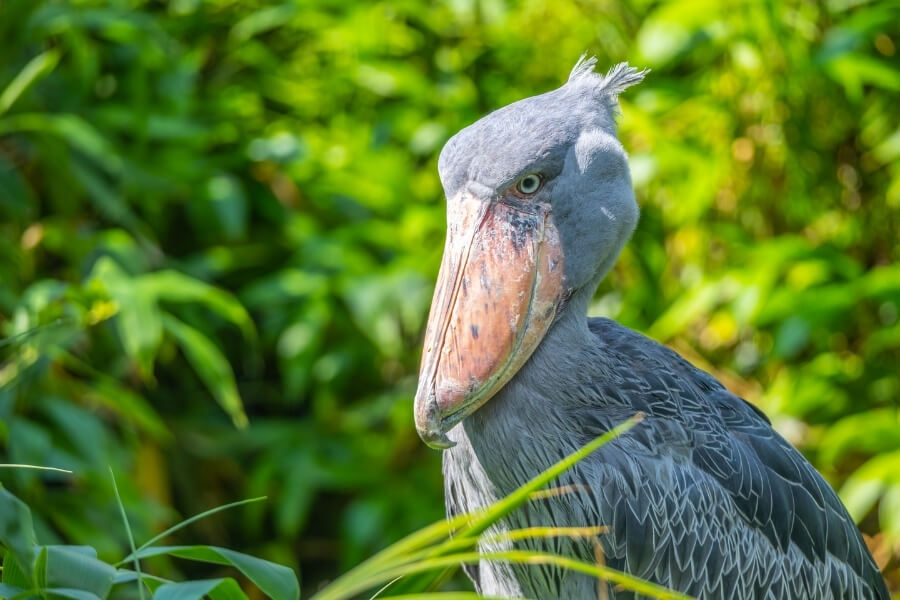
Average beak length: 7.8- 10.8 inches (19-27.4 cm) long
Even birds themselves have a hard time believing that the shoebill storks can swallow birds whole because this type of bird is one of the largest birds on earth and has the longest beaks! They’re often called ‘the whale of birds’ because these birds look like they could easily swallow a fairy tale whale if birds wanted to!

Shoebills spend most of the time standing still and silent, so other animals won’t notice birds and flee, and also so fluky winds don’t blow away their prey before birds can catch it. These birds eat mostly fish and other small animals like amphibians and snakes, which means they aren’t picky about what food birds take!
The Wood Stork

Average beak length: 6.6 inches (17 cm) long
I would have to say that the wood stork is one of the ugliest birds with long beaks on earth which I believe you’ll have no second opinion on that too.
Wood storks may only be around 1 meter tall when fully grown, but birds like this have greatly elongated bills, which help them catch fish in swamps and rivers. Since most of their food comes from freshwater sources, they’ll often gulp down salty water to help birds rehydrate and stay well-nourished. The wood stork can also get fish from marshes, but birds get most of their food from open water, which is less likely to be disturbed by predators.
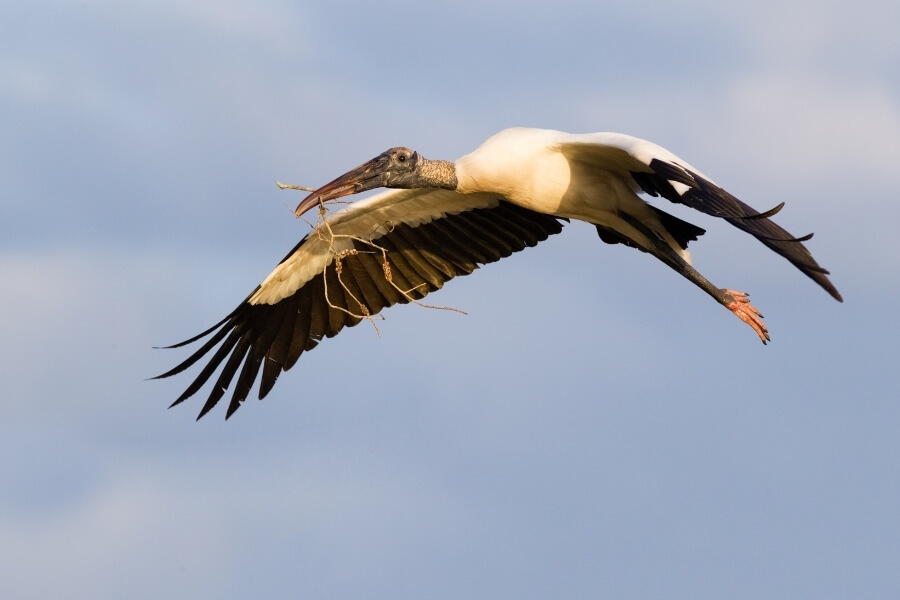
Wood storks have small wings, which means birds can’t fly for long periods, but birds make up for it in other ways! Wood storks use their long beaks to spearfish or catch them in a group with a quick jab. These birds eat crustaceans like crabs and crayfish too! This is why they often catch fish near shallow waters surrounded by mud to make it easier for small animals walking below birds to leave trails that birds can follow to prey on birds.
The Yellow-billed stork
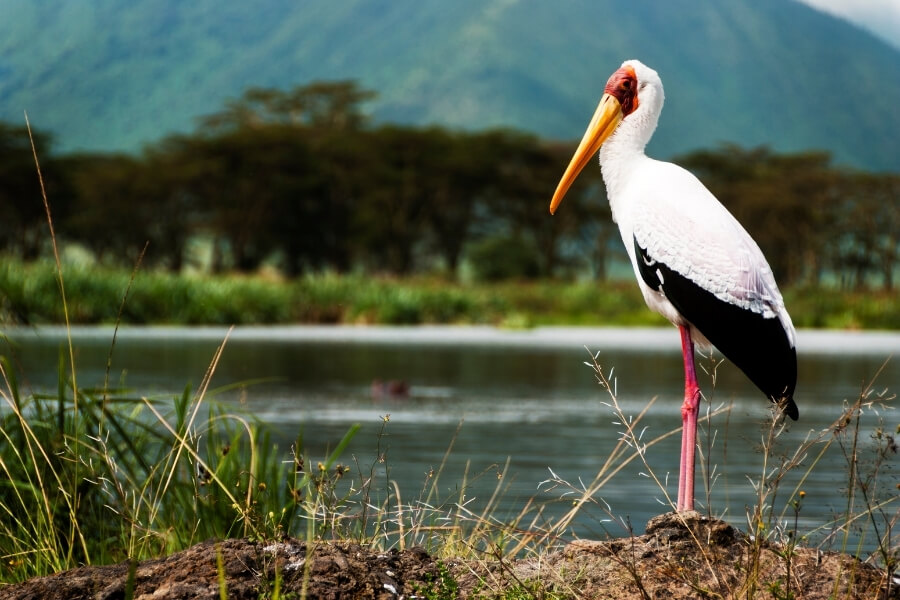
Average beak length: 7-8.8 inches (17.8-22.3 cm) long
The Yellow-billed stork, another long-beaked bird that has a body length of around 3 feet, and they are most commonly found in Africa.
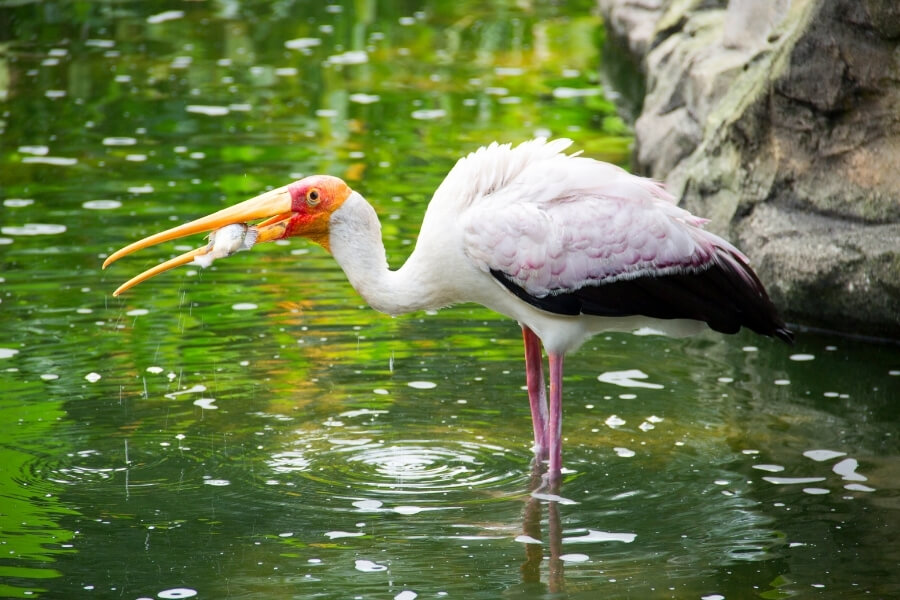
Yellow-billed storks use their long, thin beaks to catch large fish or frogs by jabbing them quickly when birds spot prey from the air. Because these birds are mostly near freshwater sources, birds are less likely to find small food on dry land. These birds are very sociable with other bird species, often gathering together in huge flocks that number in the thousands of individual birds!
The Maguari stork

Average beak length: 4.5-6 inches (11.5-15.2 cm) long
These long-beaked birds have black feathers on their backs with an iridescent purple color towards the ends of birds wings and red throughout birds’ upper chest area. Making these birds easy to see and easy for predators to find them if birds aren’t careful! Luckily, this species is very resilient when it comes to food because birds eat anything they can get their long beaks into, including plants like leaves and fruits and small animals like insects!
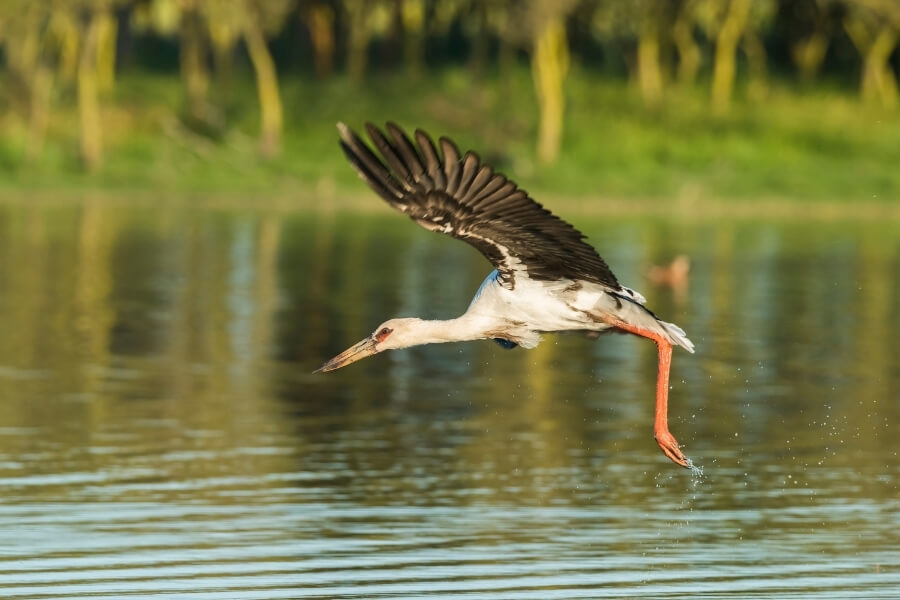
Since birds are omnivores who search for food in both water and on land, these types of long-beaked birds prefer wetland areas where birds can find birds food in both places birds live.
The White stork
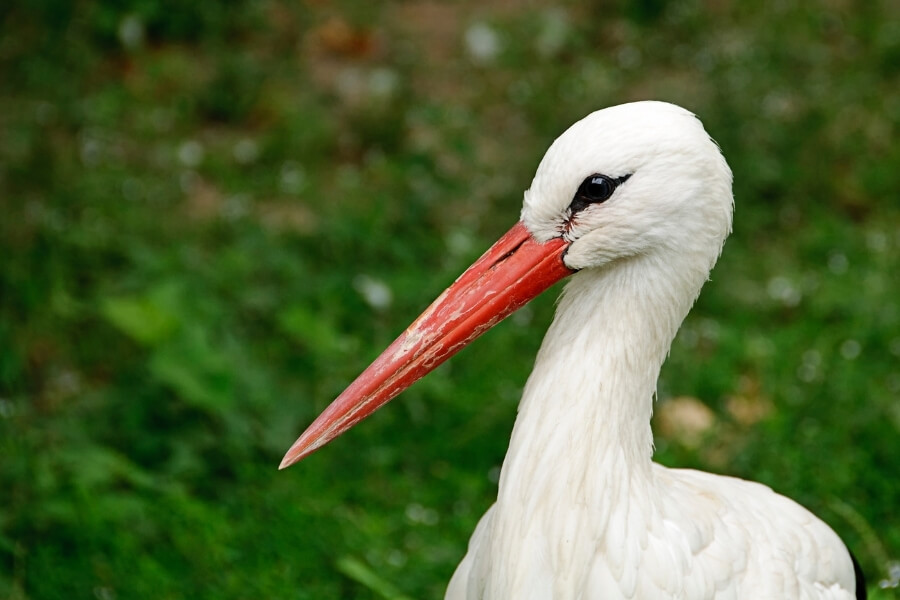
Average beak length: 6-8 inches (15-20 cm) long
The white stork is one of the most striking long beak birds with white feathers covering the body along with long, slender-looking legs that look particularly elegant in flight! These birds use larger areas for hunting, so birds will often fly low to the ground, searching for small animals like mice and lizards to eat since these birds prefer meat over plants.
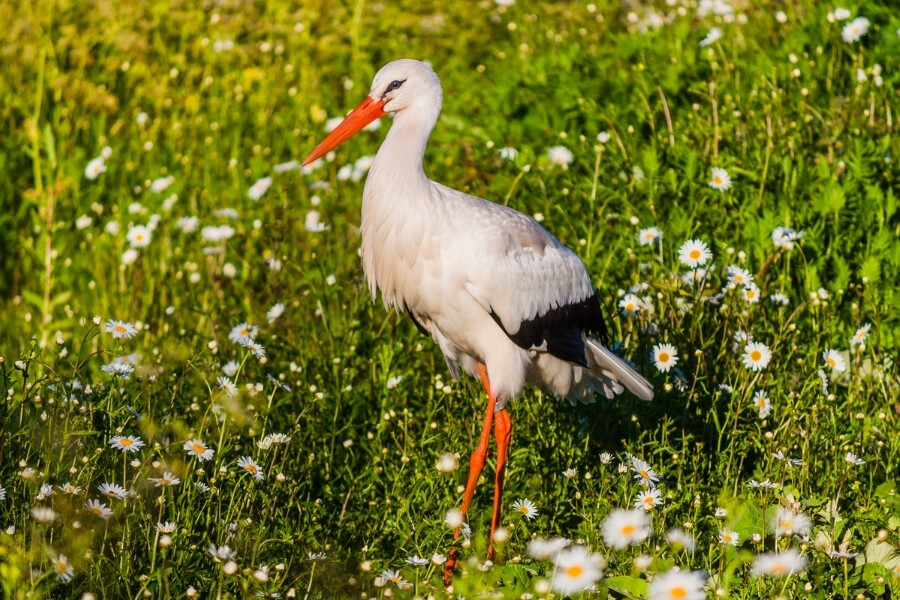
While this is usually a solitary bird’s behavior, white storks have also been seen following flocks of birds in hopes birds will flush out prey before they get there. The downside to this type of behavior is that when large groups of birds converge together, it becomes more difficult to fly easily since birds constantly bump into one another.
American Flamingo
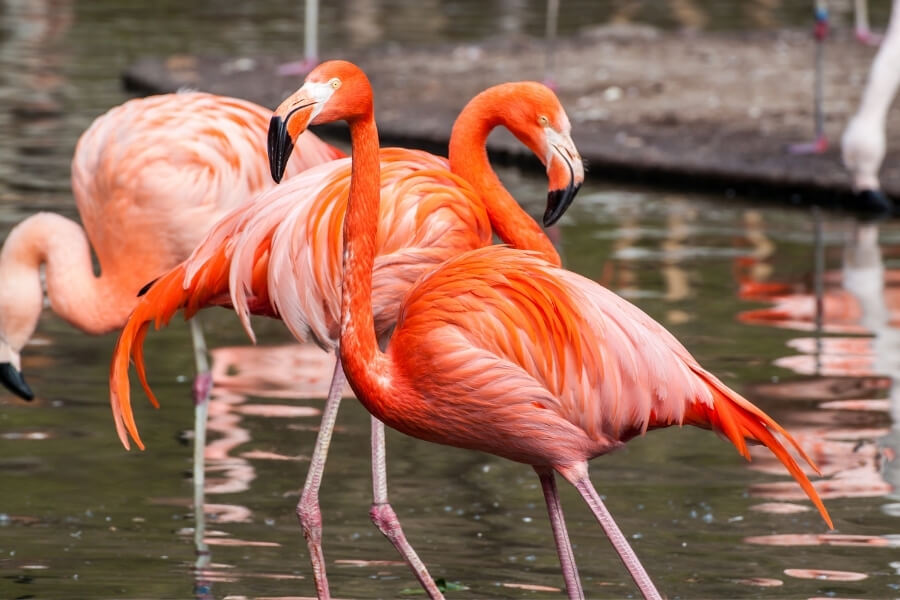
Average beak length: 5-7 inches (12.7-17.8 cm) long
The American flamingo is one of the most brightly colored birds with long beaks, which makes them unforgettable.
Since these types of long-beaked birds eat mostly small, shrimplike crustaceans and mollusks in the water, birds feed in very shallow waters where water can reach up to around 10 inches deep at most.
Flamingos hunt by standing in shallow water and using their long straight beaks to reach down into the water to bring prey back up into the bird’s mouth.
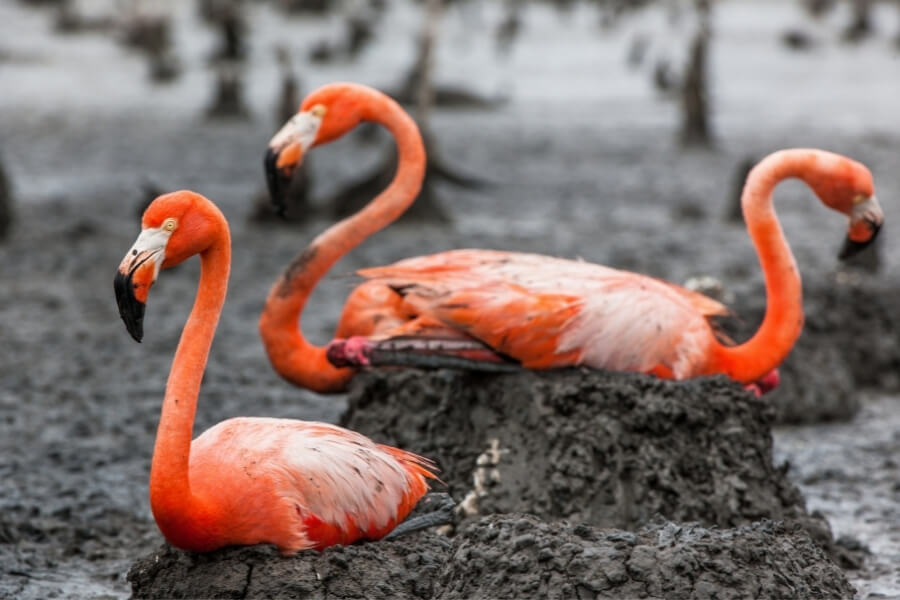
These birds are often found in large flocks, so they can increase their chances of finding larger prey because birds all follow the same individuals who spot something interesting in the water. To protect themselves from predators when gathered together in flocks like this.
Red-Necked Avocet

Average beak length: 3.5-5 inches (9-12.7 cm) long
The red-necked avocet is a long-legged wading bird with long beaks in the family Recurvirostridae. They live in Australia, New Guinea, and southern parts of Africa. The birds are often seen along waterways, mudflats, and coasts, where they feed on small aquatic insects, crustaceans, and mollusks.
They breed mainly in semiarid regions with shallow lakes and pans where the birds make a nest from plant material in a well-drained area.

Their long beaks highlight the birds as a member of the avocets and stilts family. Their beaks are slightly upturned and cross-like in appearance, and they look like miniature versions of the black-necked stilt.
The red-necked avocet feeds on small aquatic insects that it catches by running through shallow water or standing still at the edge, where it also builds its nest from plant material such as grasses, sedges, and leaves.
Rhinoceros Hornbill
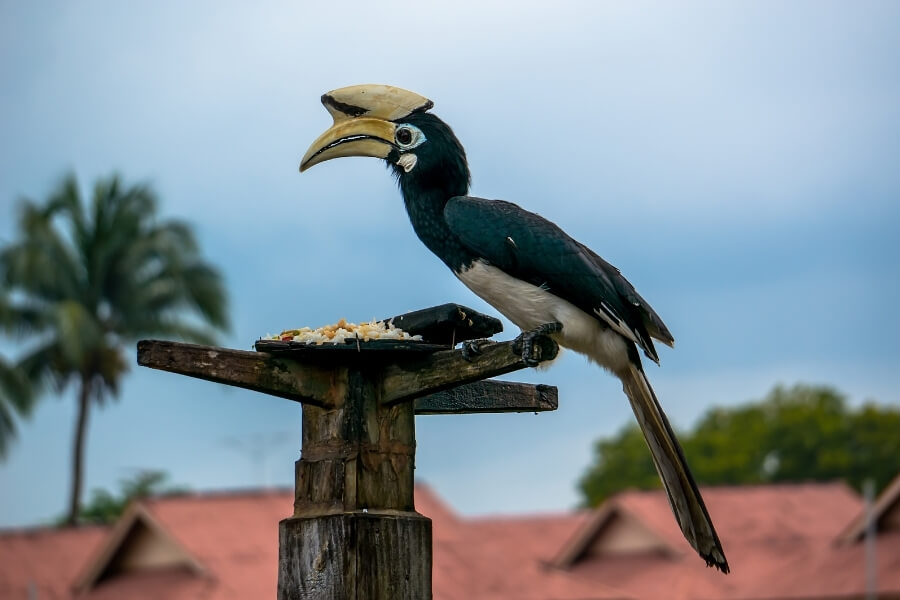
Average beak length: 8-10.4 inches (20-26.4 cm) long
The rhinoceros hornbill is a large bird with long and heavy beaks in the family Bucerotidae. It has mainly black and white feathers, and its unique feature of a casque on top of its bill acts as a resonating chamber to amplify their calls.
They are usually found in lowland rainforest or evergreen forests and inhabit mangrove swamps, grasslands, and scrublands where they eat fruits such as figs, birds eggs, and even young birds. Some birds may feed on carrion or steal other birds’ prey from other birds, which makes the species an important seed disperser. It helps increase forest regeneration due to their ability to assist in spreading seeds through their excrement.
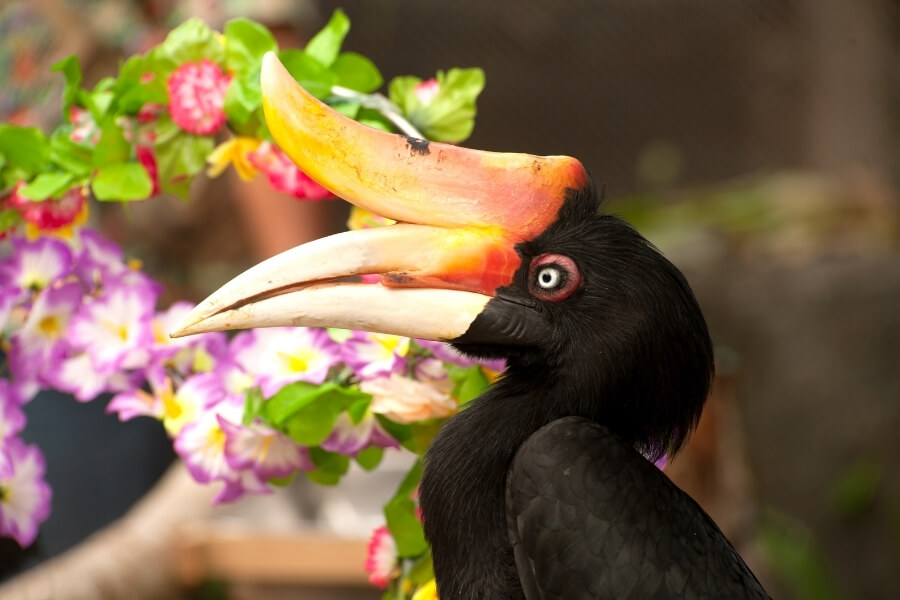
Their large beaks are related to birds of prey which they can use in their territorial fights with other birds. When birds feel threatened, they will fly back and forward, throwing leaves at their opponent until one of the birds gives up. The birds also use their bills to widen holes in trees or peck open fruits to feed on!
Hudsonian Whimbrel

Average beak length: 4-6 inches (10.2-15.2 cm) long
The Hudsonian Whimbrel is a long-beaked bird found in the birds from the shore and from the very open country.
The Hudsonian Whimbrel is also known as Numenius Phaeopus Hudsonicus, and it’s native to North America. They are often found as close as possible to shallow water, where they will often wade. In its habitat, they are likely to be seen standing on one leg. It has a grey body with a darker neck and tail and has some white on the wings.
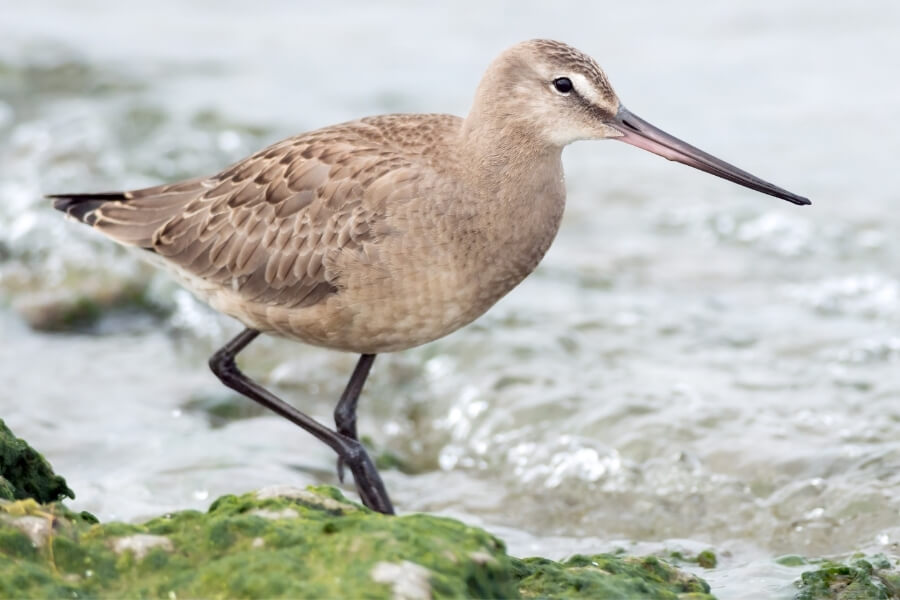
The birds with long beaks live in grasslands where they eat mainly insects and crustaceans while making their nests on the ground, often near water bodies. Both parents help feed the young birds after they hatch. Some people hunt this bird for its tasty meat, but thankfully, laws protect them, so that doesn’t happen too much anymore!
Long-Tailed Jaeger

Average beak length: 2-2.8inches (5-7cm) long
Long-tailed jaeger is often called “the sky wolf” because it preys on birds and other animals like small rodents and fish. Found in the Northern Hemisphere, this bird has a long beak that is long and slender, almost like a needle.
The jaeger birds have very long wings for their size; they are very slim birds with shaggy feathers around their heads. They have white underparts with black bands on the side of their tails with greyish-brown backs.
The jaeger birds’ beaks appear to be too thin to handle the birds’ prey, but these birds have special membranes between their tongues and throats, which prevent them from being injured when holding onto struggling birds while eating them!
Kagu
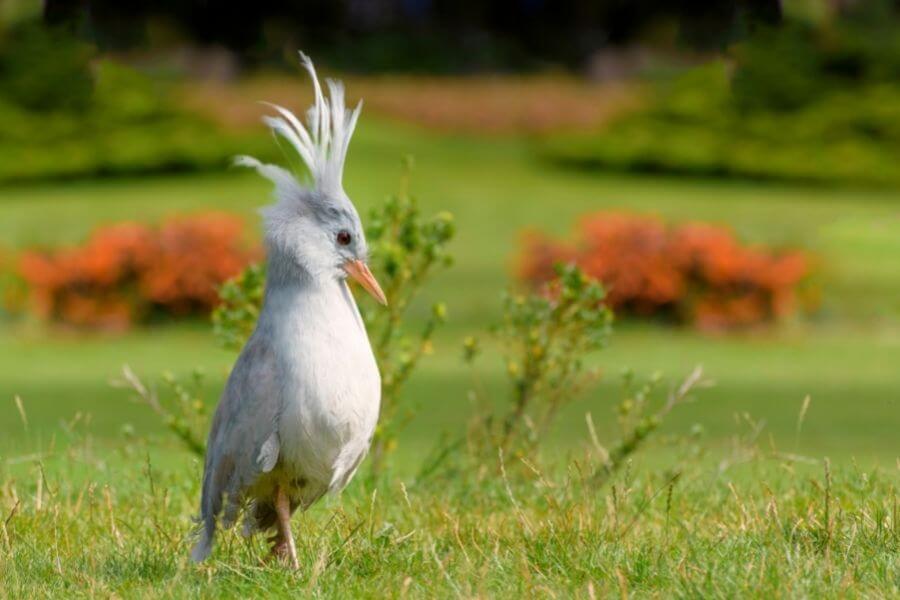
Average beak length: 2-3.1inches (5-8cm) long
Kaga or Cagou are large forest birds living in New Caledonia. They have long beaks that are completely straight, along with red eyes surrounded by black patches. The birds have legs that are covered by scales instead of feathers which give them an eerie look!
Despite looking like birds from another planet, these creatures live on earth where they forage through the undergrowth of the forests near rivers hunting for invertebrates like insects and worms and small lizards, frogs, and other amphibians. Like many birds who feed on land, they will eat fruit during seasons when plants are abundant.

The birds have a very interesting mating ritual where they dance to attract a mate, holding their bodies upright and swaying from side to side while making loud throaty calls that can be heard for miles around!
Northern Jacana

Average beak length: 2-3inches (5-7.6cm) long
The Northern Jacana is a long beak bird that is part of the wader family. This species can be found in various parts of central and South America, this bird’s name comes from the Spanish word meaning ‘one foot.’ Their long beaks are used to help feed on insects and other invertebrates in marshy and shallow water. Their diet consists of insects, larvae, mollusks, and crustaceans.

Northern Jacana is blackish to chestnut in color with yellow legs and beak. They grow up to 27 cm in length, including their long beaks, measuring 6-7cm.
Kakapo

Average beak length: 1-2inches (2.5-5cm) long
This fat green bird is native to New Zealand and belongs to the Strigopidae family. They have very long legs, a small tail, and long beaks, which they use to find grubs in the ground and climb trees when looking for food. Kakapos also have special feathers on their wings that help them glide silently through forests when hunting birds who might escape if they made too much noise!
These birds look like something out of a science fiction movie because of their long beaks and odd breast feathers, which look like they’ve come out of the wrong end of a vacuum cleaner! They are birds who climb trees to feed on fruits, seeds, and birds’ eggs.
Conclusion
So now you know all about the 28 amazing birds with long beaks and where they live and what they eat and how they behave – why not share this information with your friends so they too can learn something new every day as well? I hope you enjoyed reading this article as much as I enjoyed writing it; goodbye for now!
